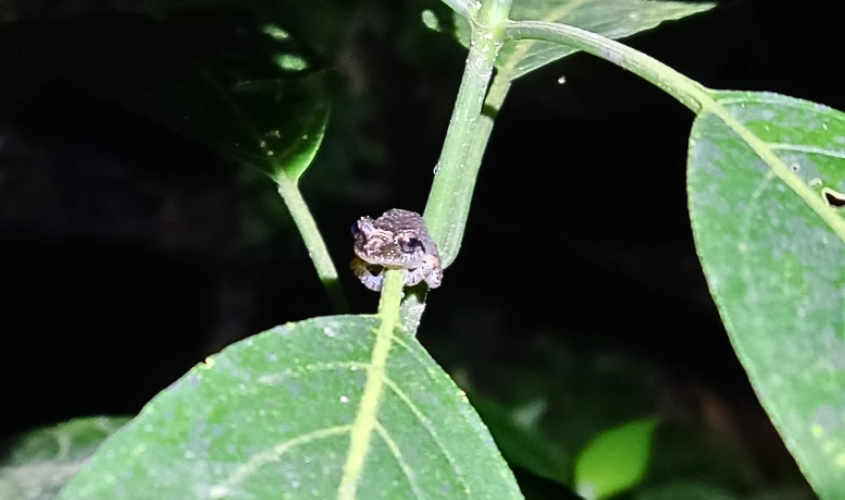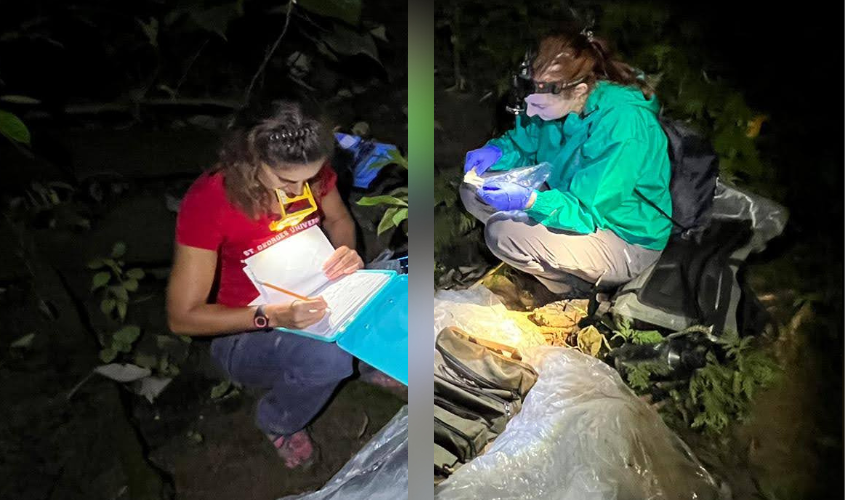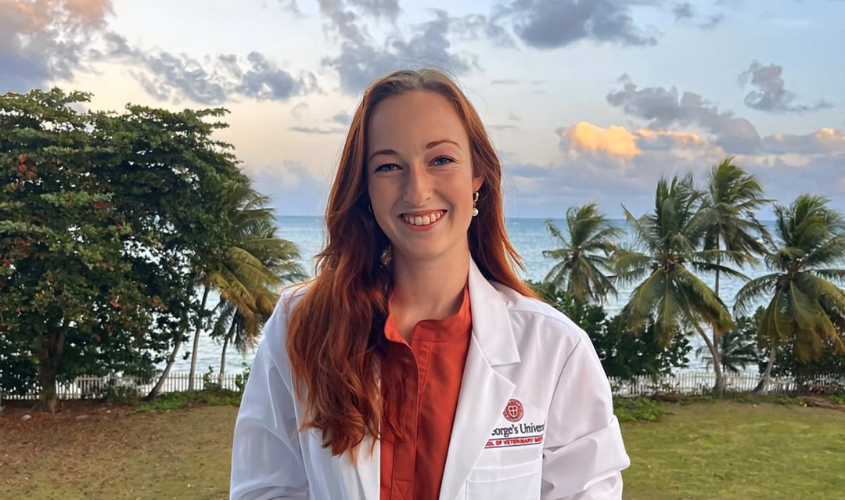A St. George’s University student’s passion for conservation and commitment to research has helped her secure a prestigious veterinary research scholarship. Shelley Lownds, a School of Veterinary Medicine Term 3 student, was recently selected for the competitive Morris Animal Foundation Veterinary Student Scholar program.
“I was very honored when I found out I received this scholarship. The Morris Animal Foundation is a reputable organization that does so much good work, and it was exciting to hear that they thought my research was as important as I do,” said Ms. Lownds, who is in the DVM/MSc dual degree program.
With the guidance of her mentor, Dr. Sophie Moittié, an assistant professor at the School of Veterinary Medicine’s Department of Pathobiology, and other professors and researchers, Ms. Lownds is studying the prevalence of Chytrid Fungus and Ranavirus in the four species of amphibians that inhabit Grenada. These two pathogens have significantly contributed to amphibian extinctions and population declines worldwide.
“There is still much to learn about Chytrid and Ranavirus, so the more knowledge we can acquire about their effect on different populations, the better we will be able to protect amphibian species worldwide,” Ms. Lownds said. She believes that researching in Grenada is especially important because of the startling presence of these pathogens and because it is home to the critically endangered Grenada frog.
Ms. Lownds, Dr. Moittié, and other members of the project’s research committee have been traveling around the island collecting skin and mouth swabs from all four amphibian species. With these samples, Ms. Lownds will test for the pathogens and other factors that impact pathogen presence.
“We hope this research will assist in conservation efforts of the Grenada frog and contribute to the greater research of Chytrid and Ranavirus,” Ms. Lownds said.
According to Dr. Moittié, Ms. Lownds is making great progress with the fieldwork, having already sampled half of the targeted number of samples for the project.

About the Veterinary Scholar Program
Securing a place as a Veterinary Student Scholar is no easy feat. Dr. Moittié emphasized the competitiveness of the scholarship saying that “each project proposal undergoes an exhaustive review process including evaluations by the foundation’s Scientific Advisory Board, Research Oversight Committee, Board of Trustees, and Animal Welfare Advisory Board.”
Ms. Lownds joined the most recent cohort of 24 scholars from all around the world and the roughly 600 students to have participated in the program since it began in 2015, according to Veterinary Practice News. Each recipient is awarded a stipend of up to $5,000 USD by the Morris Animal Foundation. In addition to the stipend provided by the foundation, SGU’s Office of Research matched Ms. Lownds’ scholarship via the Small Grants Research Initiative, which covers direct and indirect costs associated with the project.
Ms. Lownds credited her mentors and SGU as being instrumental in helping her through the whole application and research process. When deciding on a research topic, she met with many professors who helped her narrow her focus and guide her in the right direction.
She is especially grateful to Dr. Moittié who Ms. Lownds said, “always makes herself available, has been extremely helpful in guiding me through every step of the project, and has taught me so much.”

Looking ahead
Guided by wanting to work with animals and in conservation, Ms. Lownds decided to pursue veterinary science at SGU. She said she was drawn to the DVM/MSc dual degree program’s greater emphasis on wildlife and conservation research. Ms. Lownds aims to be a board-certified specialist in zoological medicine with an interest in combatting illegal wildlife trade and, of course, staying involved in conservation-based research.
“There are not many vet schools where you can begin doing wildlife and conservation work [on] day one, so this was a large draw for me. Wildlife medicine is also a very competitive field to enter, so having an MSc upon graduation will be very valuable in setting me up for my future career,” she said.
Additionally, this grant has allowed Ms. Lownds to get an early start in conservation-based veterinary research and to work with species she has less experience with. Given her lifelong passion for wildlife conservation, this scholarship is another way Ms. Lownds is helping contribute to a meaningful cause.
Dr. Moittié added that Ms. Lownds’ accomplishment shows that motivated SGU students seeking to conduct impactful research can successfully find support from internal and external funding bodies. She sees a place for Ms. Lownds’ research in presentations at international conferences and peer-reviewed publications. Furthermore, Dr. Moittié is hopeful that the recognition by the Morris Animal Foundation and the significance of this research project will bring visibility to SGU’s research community.
Dr. Neil Olson, dean of the School of Veterinary Medicine, commended Ms. Lownds on her efforts. “The School of Veterinary Medicine along with the larger SGU community are immensely proud of Ms. Lownds’ amazing accomplishment. We are eager to see where this new opportunity takes her and her contributions to the field of veterinary medicine,” he said.
— Juliette Kimmins
